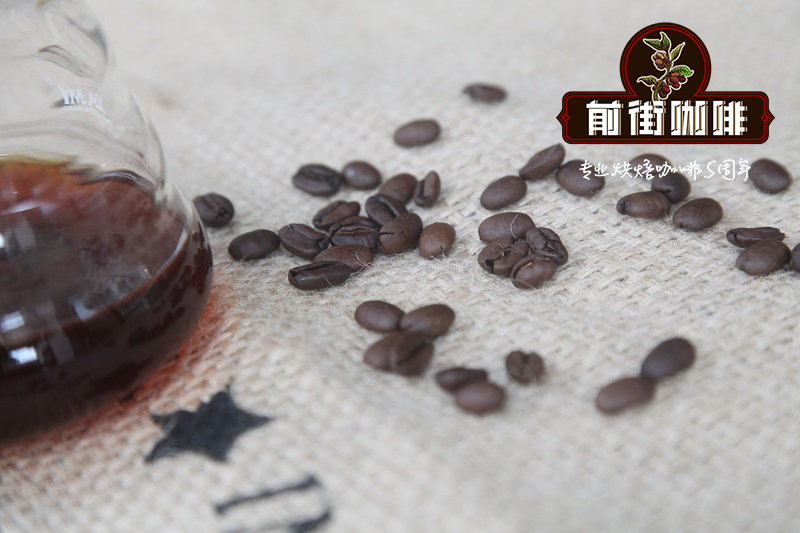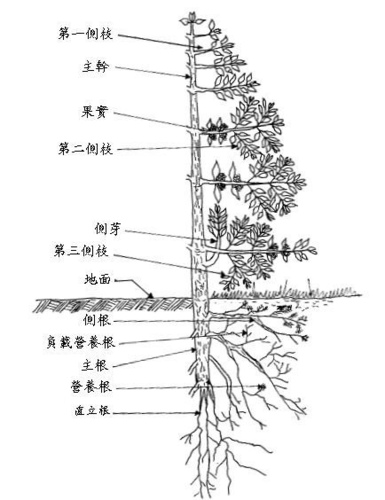How do coffee beans grow coffee tree varieties picture Daquan coffee beans species distinction

Professional coffee knowledge exchange more coffee bean information please follow the coffee workshop (Wechat official account cafe_style)
1. Introduction to coffee trees
Coffee tree height: the average Arabica coffee tree height can reach 3 to 5 meters. The length of the main root is about 30 to 40 cm.
The caffeine tree is divided into two different branches: the erect branch and the lateral branch. The growth habit of the erect branch is down to the top, also known as the trunk or branch. Sucking buds may grow at each node of the upright stem, and these sucking buds grow up into new upright branches. The transverse branch is the opposite branch which grows laterally on the independent trunk or the node on the branch, which is called the main branch or lateral branch. There are the first side branch, the second side branch, the third side branch and so on. The branch from the node of the first side branch is the second side branch, and the branch from the node of the second side branch is the third side branch. The upright stem will not blossom and bear fruit, and the lateral branch is the fruiting branch. Under the nodes of each pair of transverse branches, new erect branches may grow.
Coffee flowers bloom at the node of the transverse branch (the node where the petiole connects the branch), and the number of flowers per node ranges from 10 to 40. During flowering, it does not bloom all at once, but blossoms in fractions. Arabica coffee is self-pollinated. Basically, as long as it blossoms, it will bear fruit. The more flowers bloom, the more fruit it will bear.
Description: above the surface are trunk, branch trunk, first side branch, second side branch, third side branch, leaf, flower and fruit. Below the surface are main root, erect root, lateral root and vegetative root.
2. Coffee fruit: the main structure is exocarp, pulp (colloid), inner shell, seed coat (silver coat), seed.
Picture: structure diagram of coffee fruit
Generally speaking, coffee means that after the fruit of the coffee tree is dried, there are one or two seeds called "raw bean green bean". This seed is the coffee bean (Coffee bean).
Coffee beans have the following names according to the results of different treatments:
a. Parchment coffee bean: beans with a hard shell after peeling, fermenting, and drying.
b. Raw beans (shelled coffee beans) green bean: raw beans with shells take off their hard shells.
c. Baked beans roasted bean: raw beans are baked in a baking machine and are suitable for brewing.
3. The reproduction of coffee
4. Branches and flowering habits of Coffee trees
Coffee trees have two different forms of branches: erect branches (vertical growth) and lateral branches (oblique growth). The first is a branch that grows upward from the seed. As the erect branches continue to grow, transverse branches grow in the axils of the leaves (nodes or the base of the leaves). It often produces a pair of transverse branches at each node of the erect branch. In some cases, sucking buds grow at other nodes below each transverse branch, and these sucking buds grow into erect branches.

Table of differences between Arabica coffee and robusta coffee:
Item
Arabica Arabica
Robusta Robusta
Occurrence time of variety
1753
1895
Chromosome (2n)
forty-four
twenty-two
From flowering to fruit ripening
6-9 months
10-11 months
Florescence
After the rain
Irregularity
Fruit ripening
Fall
Do not fall
Output (raw bean kg / public item)
1500-3000
2300-4000
Root system
Deeper
Shallow
Optimum temperature (annual average)
15-24 ℃
24-30 ℃
Optimum rainfall
1500-2000 mm
2000-3000 mm
Optimum planting height
1000-2000 m
0-700 m
Leaf rust
Vulnerable
Disease resistance
Koleroga
Vulnerable
Have endurance
Nematode
Vulnerable
Disease resistance
Tracheomycosis wilt
(Coffee Wilt Disease)
Disease resistance
Vulnerable
Coffee fruit blight
Vulnerable
Disease resistance
Caffeine content
0.8-1.4% average 1.2%
1.7-4.0% average 3.0%
Bean shape
Flat
Oval shape
Brewing characteristics
Sour
It's bitter.
Important Notice :
前街咖啡 FrontStreet Coffee has moved to new addredd:
FrontStreet Coffee Address: 315,Donghua East Road,GuangZhou
Tel:020 38364473
- Prev

How to eat coffee beans? what brand of coffee beans is good? Coffee beans should be preserved like this!
Professional coffee knowledge exchange more coffee bean information Please pay attention to the coffee workshop (Wechat official account cafe_style) when cooking with martial fire, with piercing pot, a boil will soak, boil for a long time, the taste of the water will change. Stop rolling and soak again, then the leaves float. Drink in a bubble, cover it with a lid, and the taste will change again. This message cannot be sent from time to time. Drinking coffee has become an important part of modern life.
- Next

The types of coffee beans are planted from planting to harvest-how coffee trees produce coffee beans
Professional coffee knowledge exchange more coffee bean information please follow the coffee workshop (Wechat official account cafe_style) this time we will introduce the whole process of coffee beans from planting to picking, so that we can fully understand the process of coffee beans from scratch. The growth process of coffee the seedling stage is the period from the germination of seeds (or cuttings, grafting) to the emergence of seedlings (nursery nursery)
Related
- Guji coffee producing area of Guji, Ethiopia: Humbela, Shakiso, Wulaga
- What is the most expensive variety of Qiloso in BOP multi-variety group?
- How to store the coffee beans bought home?
- Why are Yemeni coffee beans so rare now?
- Ethiopian Sidamo all Red Fruit Sun Sun Santa Vini Coffee beans
- SOE is mostly sour? What does it mean? Is it a single bean? what's the difference between it and Italian blending?
- Is Italian coffee beans suitable for making hand-brewed coffee?
- How to choose coffee beans when making cold coffee? What kind of coffee beans are suitable for making cold coffee?
- Just entered the pit to make coffee, what kind of coffee beans should be chosen?
- Can only Japan buy real Blue Mountain Coffee? What are authentic Jamaican Blue Mountain coffee beans?

